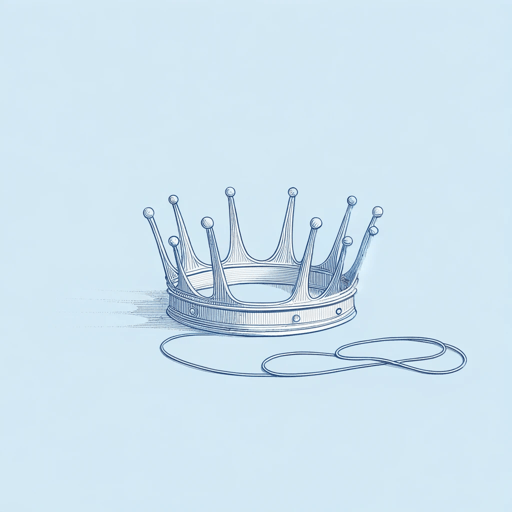19 pages • 38 minutes read
William ShakespeareSonnet 73
Fiction | Poem | Adult | Published in 1609A modern alternative to SparkNotes and CliffsNotes, SuperSummary offers high-quality Study Guides with detailed chapter summaries and analysis of major themes, characters, and more.
Summary and Study Guide
Overview
“Sonnet 73” (1609) is a love sonnet by English poet William Shakespeare (1564-1616). The poem is one of Shakespeare’s 154 sonnets published in a 1609 quarto. Almost all of these sonnets, including “Sonnet 73,” follow the English sonnet form of 14 lines, a set rhyme scheme, and an iambic pentameter rhythm. Shakespeare addresses this particular sonnet to the Fair Youth, an unnamed male character to whom Shakespeare writes the first 126 sonnets. While this poem, like all of Shakespeare’s sonnets, builds upon the legacy of Renaissance writers, Shakespeare’s poems explore poetic concepts that were new for his time, specifically in the way he does not deify his subject matter. “Sonnet 73” focuses on the concept of aging, and it argues for the importance of valuing youth because youth does not last forever, and old age comes fast. Among Shakespeare’s sonnets, “Sonnet 73” is one of the most well-known and studied. Critics consider it one of Shakespeare’s greatest poems.
Poet Biography
William Shakespeare (1564-1616) was born in Stratford-upon-Avon in England. Little is known about Shakespeare’s childhood, but his parents were affluent, and Shakespeare received a formal education in Stratford. Shakespeare married Anne Hathaway in 1582, and the couple had three children.
Shakespeare began his writing career in London sometime during the 1580s or early-1590s. While not much is known about Shakespeare’s early career, it is clear that he became a well-known playwright around this time, and his company, Lord Chamberlain’s Men (later The King’s Men), was the most popular dramatic group in London around this time. In 1603, King James became King of England, and Shakespeare’s group became the official playgroup for the royal court.
Shakespeare died in 1616 of unknown causes.
During his time as a writer and actor, Shakespeare wrote some of the most influential and important plays in history, including his four major tragedies, Hamlet, Macbeth, King Lear, and Othello. Shakespeare’s works were popular during his day, but he did not reach legendary status until after his death. It took about 100 years for his reputation to begin reaching the status it has today, and over the past 300 years, scholars, artists, critics, and readers have continued to bolster his status as the most important writer of the English language.
Shakespeare’s life remains a mystery. Because of the many unknowns surrounding his life, a number of conspiracy theories about him have become popular. One of these is whether Shakespeare ever actually existed or if his writing comes from another person or multiple people. Most scholars agree Shakespeare was a real person and the actual author of his named work.
Poem Text
That time of year thou mayst in me behold
When yellow leaves, or none, or few, do hang
Upon those boughs which shake against the cold,
Bare ruin'd choirs, where late the sweet birds sang.
In me thou see'st the twilight of such day
As after sunset fadeth in the west,
Which by and by black night doth take away,
Death's second self, that seals up all in rest.
In me thou see'st the glowing of such fire
That on the ashes of his youth doth lie,
As the death-bed whereon it must expire,
Consum'd with that which it was nourish'd by.
This thou perceiv'st, which makes thy love more strong,
To love that well which thou must leave ere long.
Shakespeare, William. “Sonnet 73.” 1609. Poetry Foundation.
Summary
“Sonnet 73” begins with an address to an unnamed recipient only referred to as “thou.” Within the context of the rest of Shakespeare’s sonnets, this recipient is the Fair Youth, a young man whom the speaker admires and might harbor romantic feelings for.
In the first quatrain (four lines of verse), the speaker creates a metaphor for early winter, saying the Fair Youth might now see the winter season in the speaker. During this season, the yellow leaves, if there are any left, fall from the branches of trees and die. This is the season when the trees shake in the cold, when the churches (a choir is a part of a church) are ruined and empty, and when the birds sing late in the evening.
The second quatrain introduces a new metaphor comparing the speaker to twilight and the passing of the day. He says the Fair Youth sees nighttime in the speaker, and the speaker expands the metaphor to describe the darkness of the night that takes away the light of the sun. The quatrain ends with the thought that the night is “Death’s second self” (Line 8) that puts everything to sleep.
The third quatrain introduces another metaphor. Here, the speaker says the Fair Youth sees a fire in the speaker that burns atop the ashes of youth. The speaker says his death bed is the thing that gives him life, meaning youth fuels the fire of life, but as the fuel of youth expires, life fades away.
In the couplet that concludes the poem, the speaker tells the Fair Youth not to take his youth for granted. He says it is important to love youth because it does not last forever and will soon abandon him. The lines also suggest that the Fair Youth’s love for the speaker increases as he realizes the speaker’s time is coming to an end.
Related Titles
By William Shakespeare

All's Well That Ends Well
William Shakespeare

A Midsummer Night's Dream
William Shakespeare

Antony and Cleopatra
William Shakespeare

As You Like It
William Shakespeare

Coriolanus
William Shakespeare

Cymbeline
William Shakespeare

Hamlet
William Shakespeare

Henry IV, Part 1
William Shakespeare

Henry IV, Part 2
William Shakespeare

Henry V
William Shakespeare

Henry VIII
William Shakespeare

Henry VI, Part 1
William Shakespeare

Henry VI, Part 3
William Shakespeare

Julius Caesar
William Shakespeare

King John
William Shakespeare

King Lear
William Shakespeare

Love's Labour's Lost
William Shakespeare

Macbeth
William Shakespeare

Measure For Measure
William Shakespeare

Much Ado About Nothing
William Shakespeare

